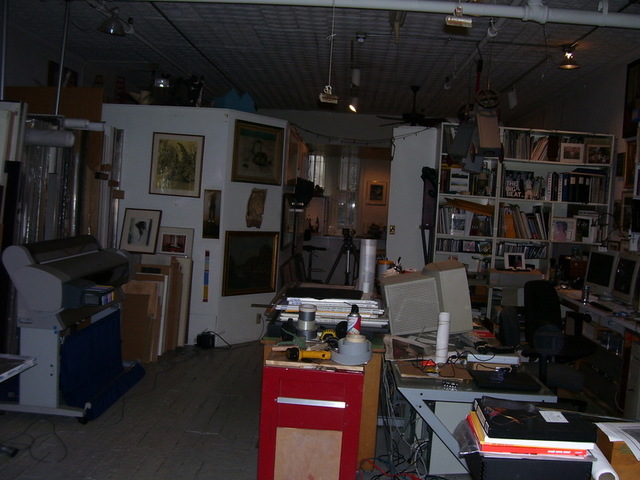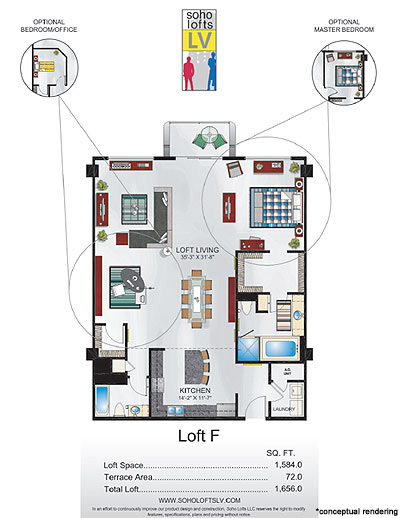Soho/Artists
From The Peopling of NYC
[edit] Soho: A Haven for Artists
From Industrial Neighborhood to Residential Community
Throughout history it has been seen that areas in which artists have converted factories into residential studios have risen rapidly in popularity and wealth. In SoHo, as with other cosmopolitan cities such as Los Angeles, the spacious layout of lofts has been an integral factor in jumpstarting gentrification. Because of their large open spaces and ability to be easily transformed, lofts are often sought after by artists and bohemians, and high ceilings, large windows and concret floors help establish an effortlessly chic atmosphere. Though lofts are usually converted from areas that are no longer commercially viable, recently, real estate developers have been building ready made lofts in areas that are on the verge of gentrifying. The location of these intentionally created lofts provides residents with access to all the luxuries of living in a wealthy neighborhood, but without the potential hazards of living in a run down industrial town.
Artists move in
"There are few spaces that offer such a range of opportunity for making a design statement as empty lofts. Structural columns, gleaming while walls, exposed radiators, windows facing unexpected views, even the web of fire sprinkler pipes, are elements that gracefully integrate into the final interior. Unrenovated lofts have become the interior design laboratories of our time"
-Suzanne Slesin, The International Book of Lofts 1986
Artists began to move into these lofts in the late 1950s. These "raw spaces" had poor, hazardous wiring, and little plumbing, but, after an initial financial investment, they were made liveable. Regardless of the structural impurities (like the exposed radiators, broken windows, and cracked walls) artists still flocked to this area because of its affordability. These 2,200- 5,000 square foot areas had rents as low as $100 a month which is relatively cheap in comparison to 4-room Manhattan apartments of equal size.
Legal Matters? or Soho exclusive to Artists?
Soho was designated a M1-5 zone, a zone for light manufacturing, in __ and remained so even while artists moved in. Needless to say, their residence in SoHo was illegal....
By 1963, exceptions were specially made for artists to live in lofts designated for light manufacturing. Artist's Certification was required for an individual to both live and work in such spaces. Under Article 7-b of the State Multiple Dwelling Law, an artist was defined as "a person who is regularly engaged in the fine arts, such as painting and sculpture, or in the performing or creative arts, including choreography and filmmaking, or in the composition of music, on a professional basis and is so certified by the city department of cultural affairs and/or state council on the arts." This excluded many writers, filmmakers, composers and choreographers. Artists interested in the spaces had to demonstrate a need for the large loft.
On September 23, 1970, Mayor Lindsay urged the City Planning Commission to legalize the quartering of artists in loft buildings in SoHo, originally zoned for light manufacturing. During the hearing, more than forty artists, politicians, and gallery-owners endorsed a plan to allow the presently illegal artists to remain in their lofts. The artists wanted to stay in SoHo so badly because they contend that it is the only place left in Manhattan where the loft space they need for their artwork is available at reasonable rent. Mayor Lindsay affirms “the creation of a SoHo artists’ district will insure New York’s position as the art capital of the nation and one of the great creative centers of the world.” This settlement would strike a balance between the needs of the artists and the area’s light industries, which employ relatively low-income workers. A member of the SoHo Artists’ Association, Gerhardt Liebmann, told the commission: “We want no boutiques, no Macdougal Street scene. We want an area where we can work in security and dignity.” Artists had been moving into SoHo lofts in great numbers in 1965 and since they were renting the lofts illegally, landlords would often wait until the artists had transformed the rundown lofts into suitable quarters and then kick them out and double the rent. By passing this bill, artists hope to find a safe place to live without the fear of gentrification. [1]
"The New York Soho may be the first neighborhood in the history of the Western world to which prospective residents are required, as an article of municipal law, to convince the authorities that they have some plausible claim to the title 'artist.'"
This article concerning the building of residential apartments specifically for non-artists may erode the SoHo referred to in the above statement. In 2000, New York State’s highest court ruled with much dismay to the artists of SoHo that a developer could build what would be the area’s first non-artist lofts in thirty years. The Court of Appeals upheld a variance to SoHo’s 1971 zoning law, which set a requirement that every household in about forty-five blocks of SoHo and NoHo include a certified artist in residence. Unlike the spacious lofts that SoHo has been known for, the new nine and seven story building would have about a hundred residential units designed for non-artist residents. In 1998, SoHo filed a lawsuit arguing that the structures would undermine the neighborhood’s character, but the court said that the buildings would have “an insignificant effect on the general character of the mixed-use neighborhood.” Councilwoman Kathryn E. Freed complains that this ruling would set a precedent for other developers changing the geography of SoHo forever. The artists not only worry for the physical change of the neighborhood, since the facades would echo the architecture of the Cast Iron District, but also that they will be even more pushed out by wealthier artists, bankers, and lawyers. Because many have seen SoHo change from an arts haven to a shopping mecca, they fear even more that this ruling will mean that “every single little lot and low building will be developed.” [2]
Today, many artists have been chased out by the exorbitant rents and replaced with the wealthier entrepreneurs, lawyers, and doctors signifying that another NYC neighborhood has been gentrified.
<center>
[edit] Who Still Has a Gallery in SoHo?
Jamali has no last name. He is a very popular and successful artist lucky enough to afford a gallery in SoHo. Only his work is sold at this quaint, fancy store covering the walls from ceiling to floor. The unique thing about Jamali is that thirty years ago a vision came to him and a dream guide commanded him to paint. In response, Jamali invented a unique style of "mystical expressionism," a marriage of contemporary consciousness and art's most ancient traditions. Jamali's fusion of these opposites--the contemporary and the timeless--has produced a life work unmatched in its scope, variety, and spiritual depth. His work is especially interesting because he paints on huge pieces of canvas and then lets them sit outside for fifteen years to collect insects, mud, leaves, twigs, and other debris of nature. Amazingly, in the end, the painting becomes what he intended for it. That is the wonder of Jamali.
[1]Burks, Edward C. “Mayor Asks Aid to ‘SoHo’ Artists.” New York Times. 24 September 1970.
[2] Lee, Denny. “Artists Say a Court Ruling Means It Won’t Be the Place They Knew.” New York Times. 24 December 2000.







